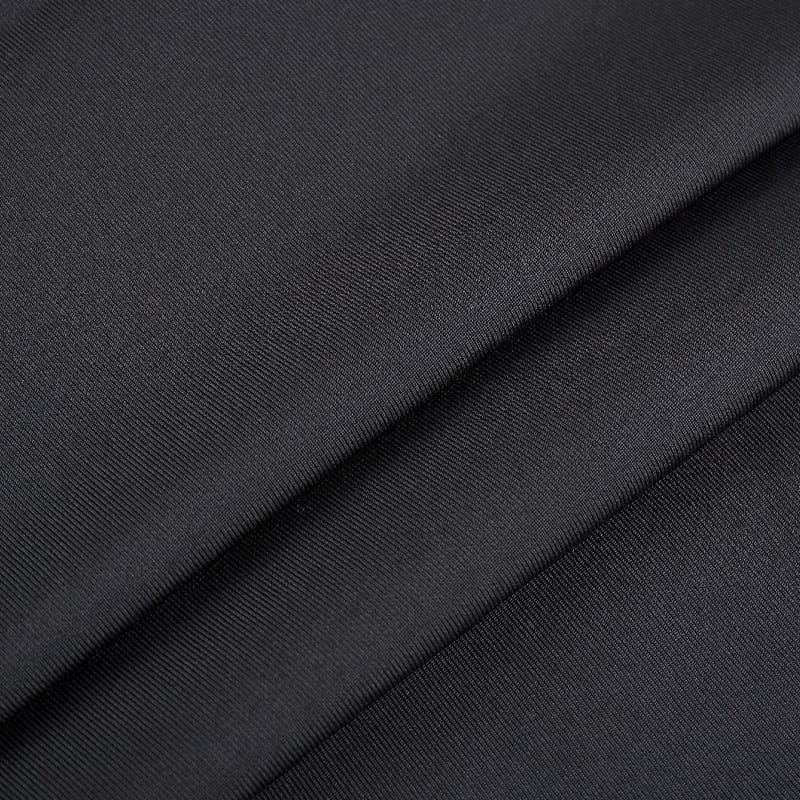Unveiling the Unique Charm of Ribbed Knit Fabric
Ribbed knit fabric holds an irreplaceable position in the textile industry due to its distinctive physical structure. Its surface features prominent vertical ribs, which are formed by a special loop intertwining technique, giving the fabric outstanding elasticity and stretchiness in width. This natural stretch allows ribbed fabric to perfectly conform to the body's curves when worn, providing a comfortable and unrestrained feel. Compared to plain knit fabrics, ribbed fabric has a stronger, more substantial feel and better thermal performance. Its resistance to deformation and wrinkling also significantly enhances a garment's durability and ease of maintenance. Whether used for close-fitting innerwear, sportswear, or as an accent detail on clothing, it provides exceptional performance. The soft hand feel and dimensional texture of this fabric also add a unique visual and tactile beauty, making it a valuable tool for designers to realize their creative visions and elevate the quality of their garments.
Customization: Giving Apparel a One-of-a-Kind Soul
In today's pursuit of personalization and brand identity, relying on conventional ribbed fabrics is no longer enough to meet market demands. Customization has emerged, offering designers endless creative possibilities. Through customization, we can precisely control the fabric's material composition, such as adjusting the ratio of polyester to spandex to achieve ideal stretch or durability. We can also alter the type of ribbing—for example, choosing a finer 1x1 rib or a more prominent 2x2 rib—to create different visual effects, all based on specific design needs. Furthermore, customization allows us to freely select colors, apply special dyeing or textural treatments, and even incorporate brand logos or unique patterns. This deep involvement in the fabric production process means that every inch of material carries a unique design philosophy, ultimately resulting in one-of-a-kind apparel. This effectively helps brands establish a distinct image in a competitive market.
The Diversified Applications of Polyester Ribbed Fabric
Polyester ribbed fabric is highly favored for its exceptional performance, and its range of applications is much broader than we might imagine. In the apparel industry, it’s not just a common material for T-shirts, sweatshirts, or jackets; it is also ingeniously used for garment details. For example, on the cuffs and hems of sportswear, the strong elasticity of polyester ribbed fabric ensures a secure fit while providing a comfortable feel. In the neckline design of hoodies, it can perfectly conform to the neck, resisting sagging and maintaining a clean, attractive appearance over time. Beyond these detail applications, it can also be used as the main fabric for creating casual pants, dresses, or even home goods. Due to the durability, wrinkle resistance, and easy-care properties of polyester, the ribbed fabric made from it is perfect for everyday clothing that requires frequent washing and wear.
Mastering the Keys to Choosing High-Quality Ribbed Fabric
Choosing the right ribbed fabric is crucial for the final quality of a garment. First, pay attention to the fabric's composition. Pure polyester ribbed fabric has good durability and shape retention, but adding a small amount of spandex can significantly boost its elasticity, leading to a better wearing experience. Second, the type of ribbing, such as 1x1, 2x2, or 3x3, directly affects the fabric's texture and feel; designers should make their selection based on the garment's style and purpose. Lastly, the fabric's weight and thickness are also important considerations. Heavier fabrics are generally thicker and warmer, making them suitable for autumn and winter clothing, while lighter fabrics are thin and breathable, better suited for spring and summer. By considering all of these factors, you can ensure you purchase the highest quality ribbed fabric that perfectly meets your design needs.
Exploring the Future Trends of Ribbed Knit Fabric
With the advancement of technology and changing consumer demands, the development of ribbed knit fabric is continuously evolving. Future trends will focus more on functionality and sustainability. In terms of functionality, we can expect the emergence of ribbed fabrics with moisture-wicking, UV-resistant, or even smart temperature-control capabilities, to meet the needs of specific sports and outdoor scenarios. As for sustainability, the use of recycled or bio-based polyester fibers will become mainstream. This not only helps reduce environmental impact but also aligns with the current consumer mindset toward sustainable development. Furthermore, combining new technologies like 3D printing to create more complex and creative rib structures will also bring revolutionary breakthroughs to apparel design. These trends indicate a promising future for ribbed knit fabric, where it will no longer be just a basic material but an innovative medium that integrates functionality, aesthetics, and sustainability.


 English
English Español
Español






